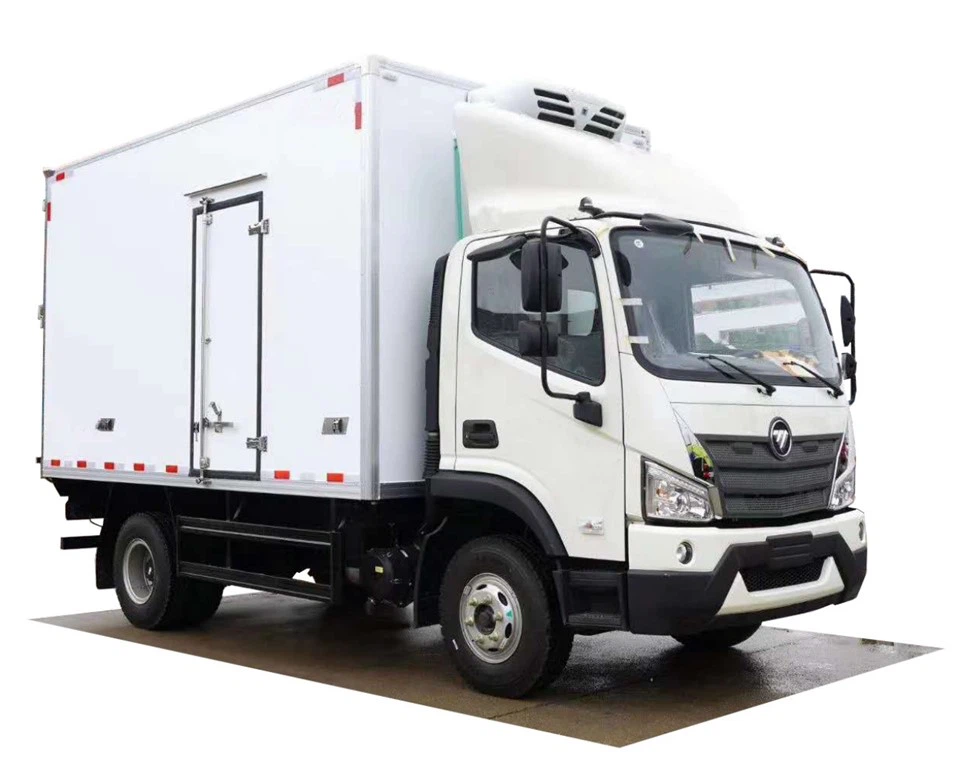Semi Truck Fuel Tank Capacity: Understanding the Essentials

In the trucking industry, the fuel tank capacity of a semi truck plays a pivotal role in operational efficiency, overall performance, and cost management. Knowing the fuel tank capacity helps truck operators and logistics planners make informed decisions that can lead to substantial cost savings and better route planning. This article delves deep into the various aspects of semi truck fuel tank capacity, including its implications, types, industry standards, and practical tips for maximizing fuel efficiency.
The Importance of Fuel Tank Capacity
Fuel tank capacity is an important consideration for any semi truck driver or fleet operator. Here’s why:
1. Efficiency and Cost Savings
A larger fuel tank allows for longer distances to be covered between refuels, saving both time and money. Fleet operators can optimize routes and reduce downtime, leading to increased efficiency.
2. Weight Considerations
Fuel tank capacity directly affects the weight of the truck. Knowing how much fuel your truck can carry helps avoid exceeding weight limits, which can incur fines and penalties.
3. Range and Distance Coverage
Understanding your truck’s fuel tank capacity is crucial for planning long-haul routes. The range a truck can cover depends significantly on how much fuel it can carry and its fuel efficiency.
What is the Average Semi Truck Fuel Tank Capacity?
The fuel tank capacity of semi trucks varies widely based on the model, purpose, and manufacturer. Generally, the average fuel tank capacity ranges between 100 to 300 gallons (approximately 378 to 1136 liters). Some factors that influence fuel tank capacity include:
1. Truck Type
Different types of trucks are designed for different purposes, which can affect their fuel tank size. For example:
| Truck Type | Averaged Fuel Tank Capacity |
|---|---|
| Day Cab Trucks | 100 – 150 gallons (378 – 567 liters) |
| Sleeper Cab Trucks | 150 – 300 gallons (567 – 1136 liters) |
| Specialty Purpose Trucks | Varies significantly |
2. Manufacturer Variations
Different manufacturers may offer various options for fuel tank capacities. Customizations may also be available based on specific needs.

3. Regulatory Standards
Local, state, and federal regulations may impact the allowed fuel tank capacity for commercial trucks. It’s essential for drivers and operators to stay informed about these regulations.
Understanding Fuel Tank Configurations

Fuel tank configurations can affect a semi truck’s overall performance and range. The primary configurations include:
1. Single Fuel Tank
A single fuel tank is common in basic models and serves the truck’s fuel needs effectively but limits flexibility.
2. Dual Fuel Tanks
Trucks equipped with dual fuel tanks benefit from extended range and the ability to balance weight more effectively across the truck.
3. Custom Configurations
Some fleets opt for custom configurations to meet specific needs, such as longer ranges for extensive hauls or weight distribution requirements.
Factors Affecting Fuel Consumption
Despite having a large fuel tank, the actual distance a semi truck can cover depends on various factors influencing fuel consumption:
1. Truck Weight
The heavier the truck, the more fuel it consumes. Understanding the weight and load on your truck is essential for calculating potential fuel needs.
2. Aerodynamics
Trucks designed with better aerodynamics typically consume less fuel. Features like streamlined shapes and aerodynamic side skirts can greatly improve efficiency.
3. Driving Habits
Driving style significantly impacts fuel consumption. Aggressive driving, such as hard braking and rapid acceleration, can lead to increased fuel usage.
4. Terrain and Weather
Driving uphill or in adverse weather conditions can increase fuel consumption. Knowing your route can help in planning fuel stops and managing consumption.
Calculating Distance Based on Fuel Tank Capacity
Calculating how far a semi truck can go based on fuel tank capacity is straightforward. The formula is:
Distance = Fuel Tank Capacity (gallons) × Fuel Efficiency (miles per gallon)
For instance, if a semi truck has a fuel tank capacity of 200 gallons and achieves an average fuel efficiency of 6 miles per gallon, the calculation would be:
| Specification | Value |
|---|---|
| Fuel Tank Capacity | 200 gallons |
| Fuel Efficiency | 6 miles/gallon |
| Total Distance | 1,200 miles |
Best Practices for Maintaining Fuel Efficiency
Improving fuel efficiency is crucial for managing costs effectively. Here are practical tips to follow:
1. Regular Maintenance
Ensure that your semi truck undergoes regular maintenance checks to keep all components functioning optimally. This includes checking the engine, oil, and filters.
2. Monitor Tire Pressure
Well-inflated tires can improve fuel efficiency. Check tire pressure regularly to ensure they are properly inflated to the manufacturer’s specifications.
3. Optimize Speed
Maintaining a consistent, moderate speed can improve fuel economy. Avoid excessive speeding or sharp decelerations.
4. Use Technology
Employ technology such as fuel management systems and GPS tracking to analyze routes and improve efficiency.

Choosing the Right Fuel Tank Size for Your Needs
Selecting the appropriate fuel tank size depends on several factors including your truck’s purpose, typical routes, and load capacities. Consider these aspects:
1. Route Length
For long-haul routes, a larger fuel tank minimizes the frequency of stops for refueling.
2. Load Weight
If frequently carrying heavy loads, account for the additional weight while determining capacity to avoid exceeding limits.
3. Regulatory Compliance
Ensure that your selection complies with weight regulations in the areas where you operate.
Future Trends in Semi Truck Fuel Tank Technology
The trucking industry is continually evolving with advancements in fuel technology. Here are a few trends to watch:
1. Alternative Fuels
As the industry shifts towards sustainability, alternative fuels such as biodiesel and electric options are becoming popular.
2. Smart Fuel Monitoring
New technology is emerging that monitors fuel levels and consumption in real-time, providing data to enhance operational efficiency.
3. Increased Focus on Environmental Impact
With rising concerns about environmental sustainability, modern trucks are increasingly designed to reduce emissions and improve fuel efficiency.
Frequently Asked Questions
1. What is the typical fuel tank capacity for a semi truck?
The typical fuel tank capacity for a semi truck ranges from 100 to 300 gallons, depending on the configuration and purpose of the truck.
2. How many miles can a semi truck travel on a full tank?
The distance a semi truck can travel on a full tank depends on its fuel efficiency; for example, a truck with a 200-gallon tank and 6 miles per gallon can travel approximately 1,200 miles.
3. Why do some trucks have dual fuel tanks?
Dual fuel tanks help extend the truck’s range, allowing for longer distances between refueling stops, thus maximizing operational efficiency.
4. How does weight affect fuel consumption?
Heavier loads generally consume more fuel, leading to decreased fuel efficiency and higher operational costs.
5. Can a larger fuel tank increase my overall cost?
While larger tanks allow for longer travel distances, they also add weight, which may influence fuel consumption rates and compliance with weight regulations.
6. What maintenance tips can help improve fuel efficiency?
Regular maintenance, maintaining proper tire pressure, optimizing driving speed, and using technology can significantly enhance fuel efficiency.
